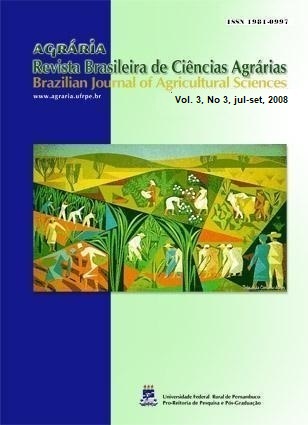Tomato seedling production in substrate containing coconut fiber and mushroom culture waste
DOI:
https://doi.org/10.5039/agraria.v3i3a261Keywords:
organic substrate, recycling, organic manure, germinationAbstract
The objective of this research was to evaluate the ratio of coconut fiber and mushroom culture waste in the tomato seedling production. A greenhouse experiment was carried out in the randomized block experimental design, with seven treatments and four replications: T1 - Commercial Substrate Hortimix®; T2 - 0% coconut fiber dry matter (CF) + 100% dry matter of mushroom culture waste (MW); T3 - 20% (CF) + 80% (MW); T4 - 40% (CF) + 60% (MW); T5 - 60% (CF) + 40% (MW); T6 - 80% (CF) + 20% (MW); T7 - 100% (CF) + 0% (MW). Stem diameter, seedling height, emergence speed, germination percentage, shoot and root fresh matter and shoot and root dry matter were evaluated. It was evidenced, for all the studied characteristics, with exception of the speed of germination-aid seedling emergence and of the germination percentage, significant differences between substrate containing coconut fiber and mushroom culture residue and the commercial substratum, the best results presented by the last one. The increase in the proportion of mushroom residue in relation to the coconut fiber provided tomato seedling with better characteristics than the others.



